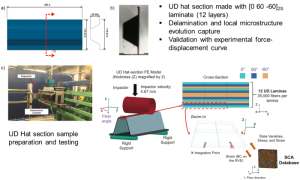Step right up to the world of Additive manufacturing innovations! Get ready to explore the latest trends and breakthroughs in technology that are reshaping traditional manufacturing processes. Let’s dive in and uncover how these innovations are revolutionizing industries worldwide.
Additive Manufacturing Innovations
Additive manufacturing, also known as 3D printing, has seen significant advancements in recent years. The latest technologies in additive manufacturing have allowed for faster production speeds, improved precision, and the ability to work with a wider range of materials.This revolution in manufacturing processes is changing the way products are designed and produced. Traditional manufacturing methods often involve subtractive processes, where material is removed to create the final product.
Additive manufacturing, on the other hand, builds products layer by layer, resulting in less material waste and more intricate designs that were previously impossible to achieve.The impact of additive manufacturing on product design and development is immense. It allows for rapid prototyping, customization, and complex geometries that traditional methods struggle to replicate. This flexibility in design has opened up new possibilities for innovation across various industries.Industries such as aerospace, automotive, healthcare, and electronics are benefiting the most from additive manufacturing innovations.
In aerospace, lightweight components can be produced with intricate internal structures that reduce weight without compromising strength. In healthcare, customized implants and prosthetics can be created to fit individual patients perfectly. The automotive industry can produce complex parts with reduced lead times and costs, while electronics benefit from the ability to create intricate circuitry in a single manufacturing step.
Industrial Goods and Services

In the context of additive manufacturing, industrial goods refer to products created for use in various industries such as automotive, aerospace, healthcare, and more. Industrial services, on the other hand, include the processes involved in producing, customizing, and maintaining these goods.
Role of Additive Manufacturing in Industrial Goods Production
Additive manufacturing plays a crucial role in the production of industrial goods by offering flexibility in design, rapid prototyping, and cost-effective manufacturing solutions. It allows for the creation of complex geometries and customized components that may not be achievable through traditional manufacturing methods.
- Additive manufacturing enables the production of lightweight yet durable parts, reducing material waste and overall production costs.
- Companies can quickly iterate and test new designs, accelerating the product development cycle and bringing innovations to market faster.
- The technology allows for on-demand production, eliminating the need for large inventories and reducing lead times for fulfilling orders.
Comparison Between Traditional and Additive Manufacturing for Industrial Goods
Traditional manufacturing processes like injection molding, casting, and machining involve subtractive methods that often result in material wastage and limited design possibilities. In contrast, additive manufacturing builds parts layer by layer, offering greater design freedom and resource efficiency.
Additive manufacturing can create complex internal geometries and intricate structures that are challenging or impossible to achieve with traditional methods.
- Traditional manufacturing processes are well-suited for mass production of standardized components, while additive manufacturing excels in producing customized, low-volume parts.
- Additive manufacturing can reduce tooling costs and lead times compared to traditional manufacturing, especially for small batch productions and prototyping.
Challenges and Opportunities in Additive Manufacturing for Industrial Applications
Companies offering additive manufacturing services for industrial applications face both challenges and opportunities in the rapidly evolving market. While the technology offers numerous benefits, there are also obstacles to overcome to fully leverage its potential.
- Challenges include the need for skilled workforce trained in additive manufacturing techniques, material limitations, and regulatory hurdles in certain industries.
- Opportunities lie in the ability to provide on-demand, customized solutions, reduce supply chain complexities, and explore new business models through digital manufacturing.
Epilogue

As we conclude our journey through Additive manufacturing innovations, we’ve witnessed the transformative power it holds for product design, industrial goods, and services. The future is bright with endless possibilities as technology continues to evolve.
Helpful Answers
How are additive manufacturing technologies advancing?
Additive manufacturing technologies are advancing rapidly by integrating new materials, improving precision, and scaling production capabilities.
Which industries benefit the most from additive manufacturing innovations?
Industries such as aerospace, automotive, healthcare, and consumer goods benefit significantly from additive manufacturing innovations due to customization and cost-effectiveness.




